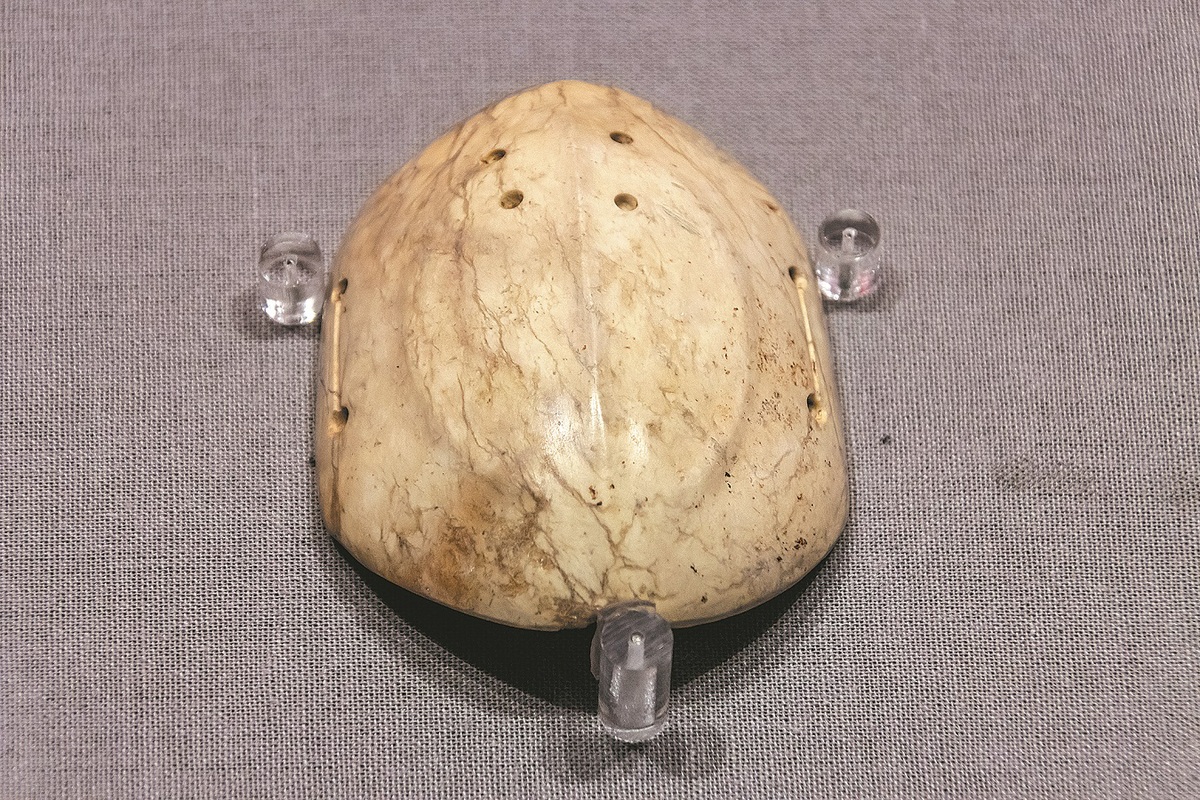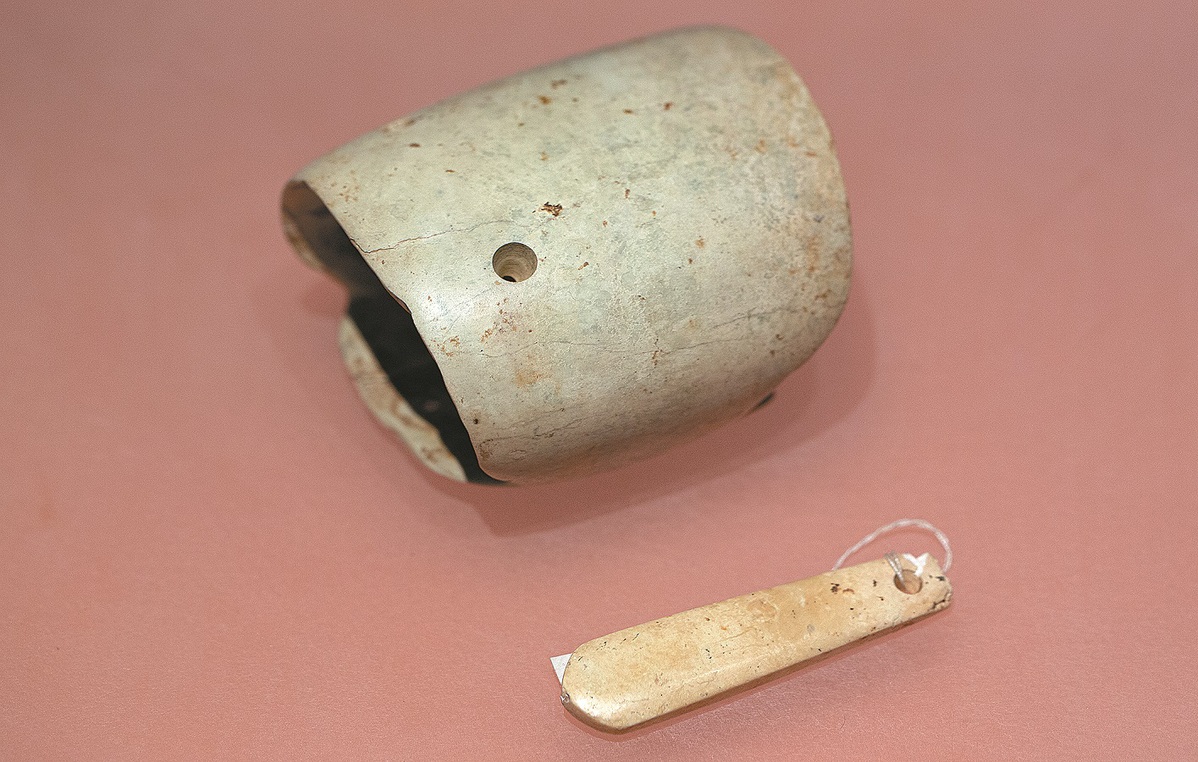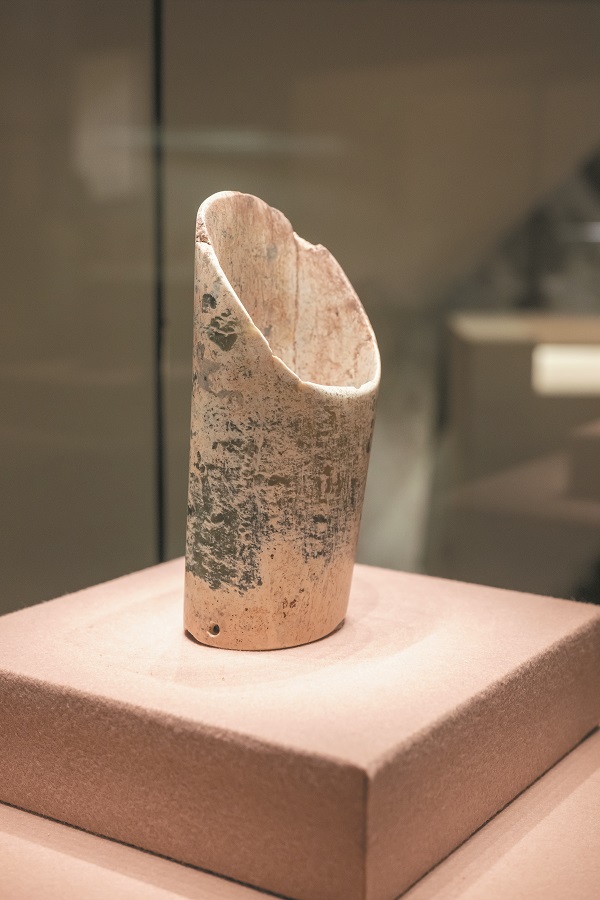Research reveals clues to jade mystery

A jade turtle from the Lingjiatan site is on show at the Palace Museum in Beijing on Feb 2, 2022.
Recent archaeological research has busted a myth about unique pieces of jade that are among the most enigmatic artifacts of the Hongshan culture.
These ancient treasures, made of local greenish nephrite and mostly resembling a horse hoof with both ends open, have baffled researchers for decades, with various theories about their origins and purpose.
The tubular objects are known for their remarkable details, with borings and polished surfaces both inside and outside, leaving generations of researchers debating the techniques and tools used to make them.
Now, recent research on a groundbreaking excavation at the Lingjiatan site in Anhui province conducted in 2007 may offer more clues about the jade pieces.
The Hongshan (red mountain) culture was a Neolithic culture in the West Liaohe River basin in Northeast China. Hongshan sites have been found in an area stretching from the Inner Mongolia autonomous region to Liaoning province and date from 4,700 to 2,900 BC. The culture is named after Hongshanhou (behind the red mountain), a site in the Hongshan district of Chifeng, Inner Mongolia.
Guo Dashun, a renowned archaeologist, elaborated on the significance of the circular jade tubes.

A turtle-shaped oblate vessel and a jade stick from the Lingjiatan site in Anhui province is on display at Anhui Museum in Hefei,
"This unique jadeware is abundant, with more than 50 pieces found to date — a substantial number considering the scarcity of Hongshan culture jade," he explained.
Unlike other jade that features intricate designs, the hoof-shaped pieces are simple and hollow, with one end beveled and the other end flat, often punctuated with small borings on both sides of the smaller end. Their origin and connection to other Hongshan artifacts remain elusive, making them a perplexing puzzle in an otherwise highly symbolic and animal-stylized culture.
The turning point came when archaeologists unearthed a Neolithic tomb at the Lingjiatan site, thousands of kilometers from the Hongshan region.
More than 200 jade artifacts were discovered in the tomb, with three possessing unique shapes that captured the attention of researchers.
Based on their observations, Zhang Jingguo, the lead excavator, and Taiwan jade experts Deng Shuping and Huang Cuimei, said that the three jade pieces were a turtle and two turtle-shaped oblate vessels with flat mouths at one end and beveled mouths at the other end, which instantly reminded them of the jade artifacts of the Hongshan culture.
The flat mouth resembled the head of the turtle, while the oblique end signified the tail.
This led to a new hypothesis that the hoof-shaped jade tubes were inspired by the form of a turtle shell — a simplification and deification of this revered animal in ancient times.

A tubular jade artifact of the Hongshan culture is displayed in an exhibition at the National Museum of China in Beijing
Previous theories suggested the Hongshan jade tubes might have been used as bracelets, arm ornaments or even hair fasteners. These interpretations now appear less accurate in light of recent discoveries, Guo said.
He said the unique jade artifacts were, in fact, sacred divination tools revered in the worship of turtle spirits. This fresh perspective provides a deeper understanding of the spiritual beliefs and rituals of the Hongshan culture.
These ancient jade pieces have emerged as powerful conduits connecting the culture's people with the mystical world of the turtle spirits, unveiling a captivating chapter in the cultural and spiritual heritage of ancient China.
Guo said he supported this breakthrough, revealing that the three jade turtles were placed around the tomb owner's waist, with different orientations.
"The jade turtle on the tomb owner's right was kept in a normal position, with the head facing south toward the tomb owner's head," Guo explained. The oblate jade vessels were on the left and middle of the tomb owner, with the one on the left holding a similar position to the jade turtle and the one on the middle overturned.
Turtle shells had previously been unearthed at archaeological sites, demonstrating a historical practice of burying turtle shells with individuals. Comparing the hoof-shaped tubes with physical turtle shells and turtle-themed artifacts from the same period, researchers found striking similarities, with the evidence forming a compelling pattern.
What was the purpose of these jade turtle shells? Guo said he believes they were divination items used in the worship of turtle spirits, and were closely related to the spiritual beliefs of the Hongshan culture.
These discoveries have added a fascinating chapter to the understanding of ancient Chinese civilization, revealing that even the simplest of artifacts can carry profound significance across millennia.

